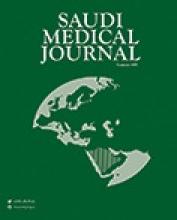Abstract
OBJECTIVE: To estimate the prevalence of effective breastfeeding (EBF) practice and its association with weight of young infants, mother's education, employment status, and parity.
METHODS: The study is a cross-sectional, conducted in Dula Health Center in Sana'a city, the capital of Yemen during the year 2003. Six hundred and twenty-one mothers and their exclusively breastfed apparently healthy infants attended to the health center for immunization were enrolled in the study. Effective breastfeeding was evaluated according to the World Health Organization integrated management of childhood illnesses literature. Weight was measured using Seca scale. We conducted interview to investigate the age of the child, parity, employment status, and education of the mother.
RESULTS: The mean age of infants was 49.7 ± 16.8 days. The prevalence of EBF was 16.9% (n = 105). Good positioning was observed in 26.7% (n=166), followed by good suckling in 23.7% (n=147) and finally by good attachment in 20.3% (n=126). The mean weight of EBF infants was 3.9 ± 0.5 kg, whereas that of the ineffectively breastfed group was 3.5 ± 0.5 kg (p<0.0001). The 2 groups were compared with gender and age matched. The mean weight of well-attached infants was 3.8 ± 0.55 kg and for those with good suckling was 3.8 ± 0.55 kg and for those with good positioning was 3.7 ± 0.59 kg. No association was found between EBF with mother's education and employment status while parity was positively related to EBF rate.
CONCLUSION: Prevalence of EBF is low. Infants with EBF are heavier than the ineffectively breast-fed infants.
- Copyright: © Saudi Medical Journal
This is an open-access article distributed under the terms of the Creative Commons Attribution-Noncommercial-Share Alike 3.0 Unported, which permits unrestricted use, distribution, and reproduction in any medium, provided the original work is properly cited.






